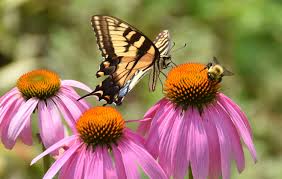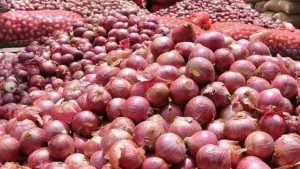Pollinators are critical in maintaining the delicate balance of ecosystems in an ever-changing world. Specifically, pollinators such as bees, butterflies, birds, and other insects are responsible for the reproduction of numerous plants, including many of the fruits, vegetables, and flowers we consume. Creating a Pollinator Garden is a rewarding and beautiful endeavor as well as an act of environmental responsibility. Therefore, this article will provide you with a comprehensive guide on how to cultivate a Pollinator Garden.
What are Pollinators, their Role and Challenges

What Are Pollinators?
Pollinators include a wide range of organisms such as bees, butterflies, moths, birds, bats, and others. In essence, they transfer pollen from one flower to another, allowing plants to be fertilized. However, this procedure is required for the growth of fruits, seeds, and vegetables.
Pollinator’s Role in Our Ecosystem
Firstly, pollinators help to maintain the diversity of plant species. Secondly, pollinators are essential for the reproduction of many of our food crops. Lastly, they contribute to the preservation of natural landscapes and provide habitat for other wildlife.
Challenge Faced by Pollinators
Pollinators face a variety of challenges, including habitat loss, pesticide exposure, and climate change. Consequently, creating Pollinator Gardens can provide them with safe havens and help them overcome these challenges.
Planning Your Pollinator Garden
Choosing the Best Location
To begin with, choose a suitable location for your pollinator garden. It should ideally receive at least 6 hours of direct sunlight per day and be protected from strong winds.
Planting Native Species
Native plants are well adapted to your local environment, thus making them an excellent choice for attracting native pollinators. Also, investigate which native plants are best suited to your area.
Biodiversity
Plant a diverse garden with a variety of flowering plants. As a result, different flower shapes, colours, and sizes will attract a broader range of pollinators.
Succession Planting
Plan for blooms throughout the growing season. Therefore, in this way, you can provide pollinators with a continuous source of nectar and pollen by choosing plants that flower at different times.
Herbs and Wildflowers
Herbs such as basil, thyme, and mint, as well as native wildflowers, are excellent choices for attracting pollinators.
Avoiding Invasive Plants
Invasive plants can outcompete native species and disrupt local ecosystems. Hence, avoid planting invasive species in your garden.
Also Read:- Nutrition and Agriculture: Bridging the Gap
Providing Shelter and Nesting Sites
Bee Nesting Habitats
Many native bees are solitary and build their nests in the ground or cavities. However, you can provide nesting habitats to accommodate them by leaving patches of bare, undisturbed soil and erecting bee houses.
Birdhouses and Nesting Boxes
Pollinators include birds like sparrows and swallows. Similarly, install birdhouses and nesting boxes in your garden to attract these avian helpers.
Water Sources
Puddling Areas
Some pollinators, such as butterflies and bees, require shallow puddles for drinking and mineral extraction. For this purpose, make a small, shallow puddling area for them with rocks.
Birdbaths
Birdbaths will benefit pollinating birds. Moreover, ensure they have access to clean, fresh water for drinking and bathing.
Minimizing Chemical Use
Pesticides
Avoid using chemical pesticides in your garden. Pollinators can be harmed or killed by them. Instead, choose natural pest control methods such as introducing beneficial insects or using neem oil.
Herbicides
Reduce or eliminate the use of herbicides. After all, weeds can provide valuable food sources for pollinators.
Maintenance and Care
Pruning and Deadheading
Pruning and deadheading plants regularly will encourage new growth and extend flowering time. Ultimately, this will ensure a constant supply of nectar and pollen.
Weeding
Control weeds in your garden to keep them from competing with pollinator-friendly plants.
Educational and Outreach Opportunities
Teaching and Learning
Involve your community, particularly children, in the process. In doing so, creates an opportunity for education and raises awareness about the importance of pollinators.
Community Gardens
Consider establishing a community pollinator garden or joining a local gardening club dedicated to pollinator conservation.
Observing and Enjoying the Results
Observing Pollinators
Spend time in your garden observing the various pollinators that come to visit. Furthermore, take note of the flowers they prefer and their behavior.
Photographic and Documentary Work
Photograph your garden and its visitors to capture their beauty. However, documenting the success of your garden can serve as a source of inspiration for others.
Conclusion
Making a Pollinator Garden is an act of environmental stewardship that benefits pollinators while also improving the beauty and biodiversity of your surroundings. In conclusion, you can create a safe haven for these important creatures by using native plants, providing essential resources such as water and nesting sites, and avoiding harmful chemicals. Additionally, your efforts can serve as an inspiration to your community, raising awareness and fostering a shared commitment to protecting our important pollinators. Your Pollinator Garden is a powerful contribution to sustaining the delicate web of life that supports us all in a world facing numerous ecological challenges.





